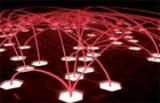
Fail-Safe Systems Required
Scalability, flexibility are necessary to adapt to changing protection needs
- By Jack Fernandes
- Dec 01, 2009
Physical security information systems, including video, are critical to a company’s security operation and general well-being. The security mission requires fail-safe systems that operate dependably over long periods of time and are ready to respond when needed. Security systems should not have to compete for network resources on the enterprise network.
Video is too important, and its bandwidth and system needs are too extensive, for it to be relegated to part of an already overburdened corporate network infrastructure. Security has historically operated separately from other corporate functions, an arrangement that supports its distinctly focused mission and enables information systems for video and security applications to operate effectively and mostly independent of other corporate operations.
Enterprise networks in today’s business world are expanding to include more users and applications and to meet accelerating demands.
The term “LAN sprawl” has been suggested to describe the multidimensional growth that is putting new stresses on the corporate network.
Video data can challenge an enterprise network because it uses a lot of bandwidth and the user has a high expectation of real-time video without latency or blocky or jittery images.
As busy, growing enterprise networks accommodate the demands of more users and applications, it becomes increasingly difficult for a video or security system to operate effectively. Many companies are concluding that the best approach is a separate IT infrastructure dedicated to video and other security systems.
With the amount of network information flowing at any given time, sharing networks across the enterprise can lead to recording and viewing problems. Video security systems should not be designed to run on shared database networks but should have their own network. It is an approach that also can take advantage of IT networking innovations designed specifically for the video and physical security marketplace.
Network Devices For Physical Security
When evaluating network devices for video and physical security applications, it is imperative to specify products that are designed specifically for these applications. Such devices are becoming increasingly available from certain security-centric companies.
For example, American Fibertek Inc. offers a comprehensive video area network control and transmission solution called V’nes (Video Network Enterprise Solution) that integrates with virtually any IP-based products, servers and software, facilitating future system enhancements. At the core of the system is an environmentally hardened IP communications center wrapped around a 10-port network switch. It is capable of monitoring temperature, air flow, humidity and power, as well as network packet flow (bandwidth), and bidirectional RS-232/485 communications: RS-232 for bidirectional serial data and cash registers (POS systems) and RS-485 for bidirectional serial data, pan-tilt-zoom control and access control.
The functionality of this and similar devices far exceeds that of a typical network switch used for traditional networking applications as it is designed to thrive in severe environments where network devices for video systems are critical. Additionally, such devices provide functions uniquely geared toward video applications that are missing from more generic network devices. For example, a portflow feature alerts users when video bandwidth drops below required performance levels in order to monitor and preserve the integrity of their video signals.
Another critical consideration for networked and remote systems is the ability to monitor environmental conditions such as voltage, frequency and power conditions to protect servers, DVRs, matrix switchers and network switches. By having instant network access to this information, users can program polling durations for each sensor and create trends to document continuous operation at evaluated but not alarm-level temperatures.
Network communication devices offer remote control of contact closures for alarms and doors. Ideally, these devices should offer multiple contact inputs and outputs, as well as RS-232/RS-422/RS-485 communication ports to allow data streams to be tunneled for one-toone, one-to-many and many-to-one communications.
The best means to take full advantage of these switching, communications and monitoring systems is an integrated control platform.
Advantages include real-time indication of environmental conditions, power, alarm inputs and auxiliary states with the ability to remotely open or lock doors or gates. Port conditions and power function also should be viewed at set intervals to provide immediate indication of normal, warning and alarm conditions.
Serving Unique Needs
The security market has unique needs and requires specialized equipment. As a supplier of networked solutions targeted to physical security and video surveillance applications, AFI continues to develop and offer new solutions designed to take advantage of the intrinsic benefits offered by networked systems.
Clearly not all IT is designed for IP-based video surveillance, which is why it can be so beneficial to use IP-based technologies targeted for video applications. Dedicating a separate network for video applications enables the system to be designed especially for that purpose, including the use of technologies to maximize functionality and dependability.